Top brands understand the importance of delivering an exceptional in-store experience to ensure the success of their brick-and-mortar operations. This understanding stems from the recognition that providing excellent customer service, engaging product demonstrations, and hosting exciting in-store events are all crucial elements in attracting new customers and fostering customer loyalty.
The significance of in-store experiences became even more apparent during the COVID-19 pandemic. As restrictions forced people to rely more heavily on online shopping, many customers expressed a longing for the tangible and social aspects of in-store shopping. In fact, a staggering 92% of customers admitted to missing the experience of shopping in a physical store. This highlights the intrinsic value customers place on the in-store experience and underscores its importance for brands seeking long-term success.
Here are 7 ways to create memorable in-store design experiences that focus on the latest retail trends.
 Experiential Retail
Experiential Retail
Many stores are now trying to create enjoyable experiences for customers instead of just focusing on selling things. This can involve organizing workshops, classes, or events in the store, giving chances for practical demonstrations of products, or making themed environments that match their brand. Home Depot’s experiential retail concept features an immersive display set-up that gave visitors decor tips and step-by-step instructions on making their next home improvement project a success.
 Sustainability and Wellness
Sustainability and Wellness
Shoppers are becoming more aware of the importance of sustainability and being healthy. Therefore, stores are using environmentally-friendly materials, focusing on using natural light and plants, and providing areas for relaxation or activities related to wellness. Stores may also give details about where the products come from and how they are made in a responsible and fair way. Sustainability is central to the Nudie Jeans brand. In their shops, customers can have old jeans repaired, return them and get 20% off in-store, or donate them to the Nudie Jeans Recycling Program.
 Mobile Integration
Mobile Integration
Retailers are using smartphones to make shopping in stores easier. This includes things like phone apps that give you recommendations just for you, offers or deals based on where you are, and easy mobile payments to make paying faster. At Target, customers can use the retailer app to help guide them to products, and because the app taps into their account, it can offer product recommendations or promotions that they might find in the same aisle.
 Smart Mirrors
Smart Mirrors
Smart mirrors have become popular in fitting rooms. These mirrors have digital technology that can give more information about the products, suggest other items that go well with them, or let customers ask for different sizes or styles without having to leave the fitting room. In an effort to get people to feel better about themselves in general, as well as while shopping, IKEA features a that mirror delivers unexpected compliments to consumers. These compliments are displayed as blocks of text on the mirror, which are also read as a shopper stands before the mirror.
 Interactive Displays
Interactive Displays
Retailers and brands are using interactive displays in store to encourage customer involvement. These displays feature touchscreens, augmented reality (AR), or virtual reality (VR) features that let customers virtually try out products, see customization choices, or learn more about products. Woolite created a retail display that informs and intrigues consumers. The interactive concept features an engaging touchscreen that gives users access to fun and myth-busting facts about the popular laundry detergent.
 Data Analytics
Data Analytics
Utilizing data analytics, retailers can gain insights into customer behavior, preferences, and purchase patterns. This information allows them to personalize the in-store experience further, optimize store layouts, and tailor product offerings to meet customer demand effectively. Fashion retailer Oasis has added QR codes to their products, which lead customers to a website where they can give feedback to provide consumer insight.
 Personalization
Personalization
In-store experiences that offer personalization have become increasingly prevalent. Customers can customize products with their names, monograms, or preferred designs. Some stores even provide digital tools for customers to design their own products and see them come to life in real time. The House of Innovation, Nike’s flagship store in New York City, is six stories of “living retail come to life.” Each floor offers customers different ways to interact with the brand, including a floor where customers can customize their own sneakers.
Top brands recognize that providing a great in-store experience is essential for thriving in the brick-and-mortar retail landscape. By prioritizing customer service, offering engaging product demonstrations, and hosting exciting in-store events, brands can attract new customers, foster customer loyalty, and meet the desires of customers who long for the unique and memorable experiences that only a physical store can provide.

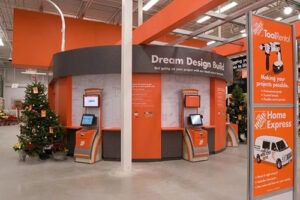 Experiential Retail
Experiential Retail Sustainability and Wellness
Sustainability and Wellness Mobile Integration
Mobile Integration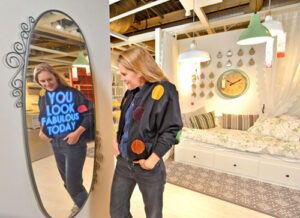 Smart Mirrors
Smart Mirrors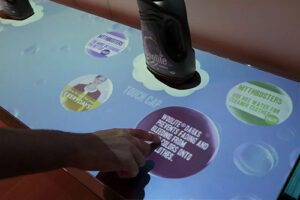 Interactive Displays
Interactive Displays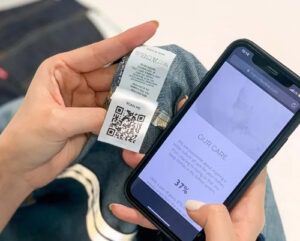 Data Analytics
Data Analytics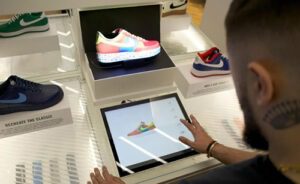 Personalization
Personalization
